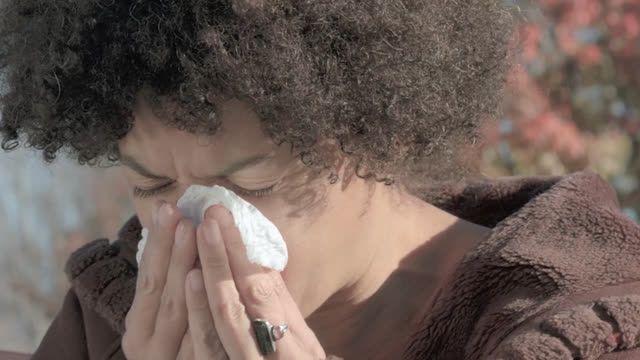Overview
When you have allergies, you may feel better or worse at different times of the year. Learning what triggers your allergy symptoms will help you manage and treat your allergies. Managing your allergies is an important part of your health and can help you avoid other problems.
Pollen
Plants make pollen. The pollens that can cause allergies are usually from trees, grasses, or weeds. These pollens are small, light, and dry, so the wind easily picks them up and carries them, often for long distances. Flowers also make pollen, which is spread by insects. Usually, only a little flower pollen gets into the air. So people usually do not have symptoms from this kind of pollen.
The pollen count measures the pollen in the air. When this number is high, you will be more likely to have an allergic reaction if you are allergic to pollens. Windy, dry weather often results in a high pollen count, while damp weather lowers it.
During the allergy season, TV stations, newspapers, or medical centers report local pollen counts. If you have allergies, find out where the pollen counts are advertised so you can avoid pollen when the counts are high. You may also look up the National Allergy Bureau's website for pollen count information at https://pollen.aaaai.org/#/.
The exact dates of pollen seasons vary in different parts of the United States, but usually:
- Winter and spring bring tree pollens.
- Late spring to midsummer brings grass pollens.
- Late summer to early fall brings weed pollens. Ragweed pollen is a common cause of allergic rhinitis in the United States.
Mold
Mold looks like green, black, or white splotches on plants or on damp surfaces. Mold contains spores, which float in the air like pollen. If you are allergic to mold, breathing in the spores will cause a reaction.
Mold can live on soil, plants, rotting wood, or dead leaves. Indoors, it can live in damp places like basements, bathrooms, refrigerators, and window sills. Some outdoor mold spores are more likely to be in the air on dry, windy days. Other mold spores are more likely to be present on rainy days.
Dust mites
Dust mites are tiny, eight-legged creatures (arachnids) that are so small you can only see them with a microscope. Dust mites eat dead flakes of human skin. They do not bite or spread disease. People are allergic to the insects' droppings, not the insects themselves. If you are allergic to dust mites, you usually have a problem all year.
Dust mites live mostly in carpeting, bedding, furniture, or stuffed animals. How clean your home is has nothing to do with whether you have dust mites. They thrive in warm, damp conditions. They are not found in cold or dry climates.
Animal dander
Animal dander is loose skin cells (like dandruff) from animals such as dogs and cats. These skin cells contain saliva or other material from the animals. The cells float in the air. If you are allergic to animal dander, when you breathe in the cells you may have an allergic reaction.
Animal dander causes the allergy, not animal fur or hair. The length of the fur on an animal does not affect how allergic you are to an animal.
Cockroaches
Cockroaches cause an allergic reaction in many people. The reaction results from breathing the air where there are dead cockroaches and their droppings (feces).
Related Information
- Allergic Rhinitis
- Asthma in Children
- Asthma in Teens and Adults
Credits
Current as of: October 25, 2024
Author: Ignite Healthwise, LLC Staff
Clinical Review Board
All Ignite Healthwise, LLC education is reviewed by a team that includes physicians, nurses, advanced practitioners, registered dieticians, and other healthcare professionals.
Current as of: October 25, 2024
Author: Ignite Healthwise, LLC Staff
Clinical Review Board
All Ignite Healthwise, LLC education is reviewed by a team that includes physicians, nurses, advanced practitioners, registered dieticians, and other healthcare professionals.


